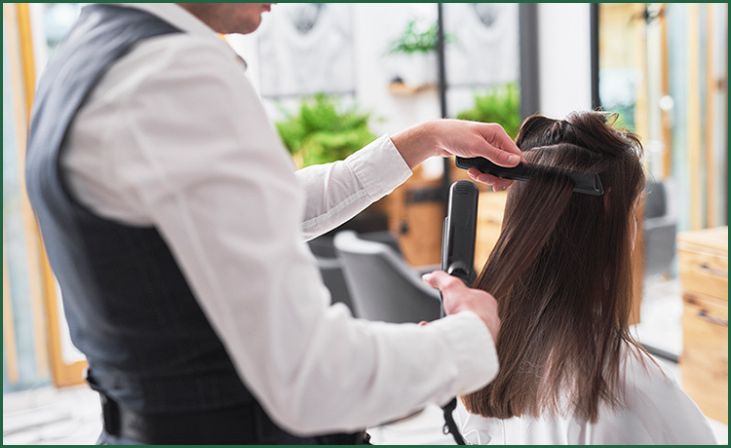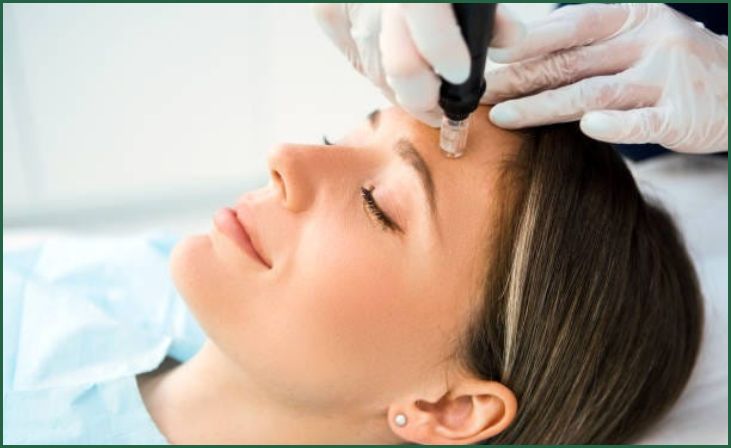Long, luxurious locks are not just a beauty trend but a timeless symbol of confidence and vitality. In the pursuit of stunning, head-turning hair, understanding and adhering to a set of golden rules is paramount. These rules, ranging from a nutrient-rich diet to strategic hair care practices, hold the key to achieving the dream of long, luxurious hair. As we embark on this journey, each golden rule becomes a stepping stone toward healthier, more vibrant strands.
Join us in unraveling the secrets to beautiful hair that not only captivates but also reflects the care and attention it truly deserves. Discover the transformative power of embracing these golden rules for a mane that radiates health, strength, and undeniable allure.
Table of Contents
ToggleRule 1: Balanced Diet

Nutrients essential for hair health
To promote long, luxurious hair, it’s crucial to nourish your body with the right nutrients. Proteins, vitamins (especially A and E), and minerals like iron and zinc play a vital role in hair growth.
Foods to promote hair growth
Include foods like eggs, nuts, leafy greens, and fish in your diet to ensure you’re getting the essential nutrients for promoting hair growth.
Rule 2: Regular Hair Care Routine
Importance of regular washing
Establishing a consistent hair care routine is key. Regular washing helps to remove dirt and excess oil, keeping your scalp healthy.
Read Also: 8 Hair Styles For Girls This Winter
Choosing the right shampoo and conditioner
Selecting the right products for your hair type is crucial. Consider your hair’s texture and any specific concerns, such as dryness or color-treated hair.
Rule 3: Avoid Heat Damage
The damaging effects of heat styling tools
Excessive use of heat styling tools can lead to damaged and brittle hair. Limit the use of flat irons and curling wands to maintain hair health.
Alternatives for heat-free styling
Experiment with heat-free styling methods, such as braiding or twisting, to achieve beautiful hairstyles without risking heat damage.
V. Rule 4: Trim Regularly

The significance of regular haircuts
Regular trims are essential for preventing split ends and breakage. Aim for a trim every 8-12 weeks to keep your hair looking fresh and healthy.
Preventing split ends and breakage
Trimming removes damaged ends, preventing split ends from traveling up the hair shaft and causing further breakage.
Rule 5: Choose the Right Products
Importance of using quality hair products
Invest in high-quality shampoos, conditioners, and styling products. Quality products can make a significant difference in the health and appearance of your hair.
Avoiding harmful chemicals
Be mindful of harmful chemicals in hair products, such as sulfates and parabens. Opt for natural or organic alternatives to protect your hair.
Rule 6: Gentle Detangling
The impact of harsh brushing on hair
Rough brushing can lead to breakage and damage. Use a wide-tooth comb or a detangling brush to gently work through knots and tangles.
Tips for gentle detangling
Start detangling from the ends and work your way up, using a leave-in conditioner to make the process smoother.
Rule 7: Protect Your Hair
Safeguarding hair from environmental factors
Environmental factors like sun, wind, and pollution can damage your hair. Use protective measures such as hats or scarves to shield your hair.
Don't just scroll, subscribe!
BuzzTrail's unique web-stories are the cure for boredom you've been waiting for.
Read Also: Unlocking Style: 7 Men’s Trendiest Haircuts and Styles: Formal to STYLISH
Nighttime hair protection tips
Consider using a silk or satin pillowcase to reduce friction and prevent hair breakage while you sleep.
Rule 8: Stay Hydrated

The connection between hydration and hair health
Proper hydration is crucial for overall health, and it also reflects in your hair. Drink an adequate amount of water daily to keep your hair hydrated.
Tips for maintaining optimal hair hydration
Use moisturizing hair masks regularly and avoid excessive exposure to chlorine or saltwater, as they can dry out your hair.
Common Mistakes to Avoid
Overuse of styling products
Excessive use of styling products can weigh down your hair and lead to buildup. Use them sparingly to maintain a natural and healthy look.
Ignoring signs of damage
Pay attention to your hair’s condition. Ignoring signs of damage, such as split ends or excessive shedding, can lead to more significant issues over time.
DIY Hair Masks for Nourishment
Homemade recipes for healthy hair
Treat your hair to nourishing DIY masks using ingredients like avocado, honey, and coconut oil. These natural remedies can provide deep hydration and strengthen your hair.
Benefits of natural ingredients
Natural ingredients are often rich in vitamins and minerals that can benefit your hair without the harsh chemicals found in some commercial products.
Addressing Hair Loss Concerns
Understanding common causes of hair loss
If you’re experiencing excessive hair loss, understanding the root cause is essential. Factors like stress, hormonal changes, and genetics can contribute.
Seeking professional advice
Consult with a healthcare professional or a dermatologist to address hair loss concerns and explore potential solutions.
Embracing Natural Texture
Celebrating diverse hair textures
Embrace the natural texture of your hair. Whether it’s straight, wavy, curly, or coily, each texture is unique and beautiful.
Tips for enhancing natural curls or waves
Use styling products specifically designed for your hair texture to enhance and define your natural curls or waves.
The Role of Genetics

Genetic factors influencing hair health
Genetics play a significant role in your hair’s characteristics, including texture and thickness. Understanding your genetic predisposition can help you tailor your hair care routine.
Making the most of your genetic predisposition
Work with your natural hair attributes rather than against them. Choose hairstyles and products that complement your hair’s natural tendencies.
Conclusion
In conclusion, the path to long, luxurious hair is paved with these golden rules, each a testament to the care and commitment your hair deserves. From nourishing your body to embracing natural textures, these guidelines form the foundation of a radiant mane. As you incorporate these practices into your routine, watch as your hair transforms into a symbol of health and beauty. So, embark on this journey with confidence, knowing that with each step, you’re not just caring for your hair but celebrating the unique and stunning expression of yourself.
FAQ
How often should I trim my hair for optimal health?
How often should I trim my hair for optimal health?
Regular trims every 8-12 weeks are ideal for preventing split ends and maintaining healthy hair.
Are there specific hairstyles for different hair textures?
Are there specific hairstyles for different hair textures?
Yes, choosing hairstyles that complement your natural texture enhances the overall look of your hair.
Can I reverse hair damage caused by heat styling tools?
Can I reverse hair damage caused by heat styling tools?
While complete reversal may not be possible, adopting heat-free styling methods and using nourishing treatments can improve hair health.
What role does genetics play in hair loss?
What role does genetics play in hair loss?
Genetics can influence hair loss patterns, but lifestyle factors also play a significant role. Consult with a professional for personalized advice.

